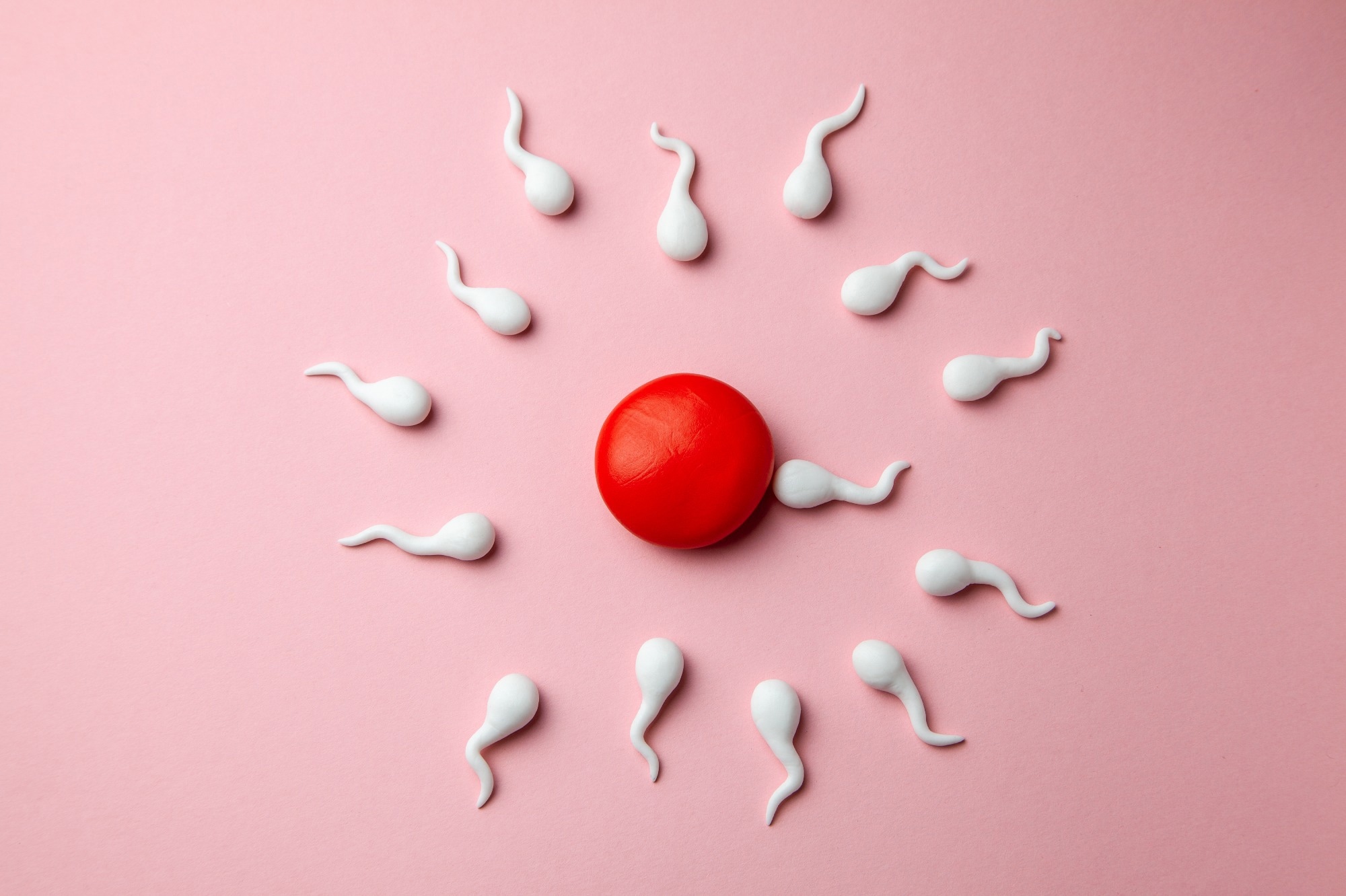About one in six women of reproductive age face difficulties in conceiving or carrying a pregnancy to term. Although there has been a global increase in the use of assisted reproductive technologies (ARTs), the success rate of live birth has remained almost the same.
 Study: Association between chemical mixtures and female fertility in women undergoing assisted reproduction in Sweden and Estonia. Image Credit: ADragan / Shutterstock
Study: Association between chemical mixtures and female fertility in women undergoing assisted reproduction in Sweden and Estonia. Image Credit: ADragan / Shutterstock
Background
Infertility is defined as the inability to conceive after twelve months of regular unprotected intercourse. This could be caused by male, female, or male/female factors. One of the common causes of infertility is ovarian disorders. Since hormones play an essential role in ovarian function, scientists assumed that exposure to human-made chemicals that damage the endocrine system could induce infertility.
Several chemicals have been identified as endocrine disrupting chemicals (EDCs), which alter the functions of the endocrine system and harm the organism or its progeny. EDCs, such as bisphenols, per- and polyfluoroalkyl substances (PFAS), and phthalates, are associated with fecundity and fertility. These chemicals are popularly found in daily used products, including common household and personal care items.
It is imperative to determine how EDCs are associated with biomarkers of female fertility, such as the ovarian sensitivity index (OSI). OSI measures ovarian capability by analyzing its response to the exogenous follicle-stimulating hormone (FSH) stimulation during ART. OSI is closely related to live birth (LB) rates because it determines the remaining pool of oocytes and functional aspects of ovaries. Therefore, OSI has been considered a good biomarker of female fertility and a predictor of ART’s success.
Although women are exposed to a complex mixture of several chemicals through environmental exposure, most studies have only analyzed the effect of individual chemicals on humans and not their mixed form. A recent Environmental Research journal study has sought to address this limitation and conducted an epidemiological study to investigate the impact of a mixture of known and suspected EDCs on female fertility.
About the Study
Follicular fluid was collected from 333 women from Sweden and Estonia to establish the association between chemicals and female fertility. OSI was evaluated, which served as an indicator of ovarian response, clinical pregnancy (CP), and LB from fresh and frozen embryo transfers.
Overall, 59 chemicals were detected in the follicular fluid samples, along with three phthalate metabolites, di-2-ethylhexyl phthalate (DEHP) metabolites, six PFAS, and one paraben, in over 90% of the study cohort.
Study Findings
The current study evaluated parabens, phthalates, and PFAS as potential EDCs interacting with the endocrine system via many biological mechanisms. An inverse correlation between certain chemical concentrations and OSI was observed. For instance, a significant association was determined between a high concentration of DEHP metabolite (Swedish cohort) and methylparaben (Estonian cohort) and lower OSI. This finding indicated that these chemicals had a high possibility of interfering with ovarian sensitivity in women. The results documented in this study are in line with previous studies that reported that a higher molar sum of DEHP metabolites was associated with lower basal antral follicle count (bAFC), and a lower possibility of LB and clinical pregnancy (CP) after ART.
The underlying mechanisms associated with the inverse relationship between DEHP and fertility were found to be growth inhibition of antral follicles through reduced 17-beta oestradiol (E2) production and alteration of ovarian functioning.
Strengths and Limitations
One of the key strengths of this study is its methodology. For instance, the analysis of two separate cohorts improved the generalizability of the findings. The authors claimed this study to be the first to investigate the relationship between EDCs and OSI.
The small-sized cohort is a significant limitation of this study. In addition, the assessment of the clinical outcomes of individuals exposed to particular chemical and chemical mixtures was severely hampered due to a low number of CP and LB in the study cohort. Another limitation of this study is not adjusting for confounding factors in all analyses.
Conclusions and Future Perspectives
The present study revealed the adverse effects of various types of chemicals on women within the fertility domain. An inverse relationship between DEHP metabolites and female fertility was observed. Other chemicals, such as methylparaben and possibly PFUnDA and PFOA, were identified to be associated with female infertility through disruption of ovarian function.
In the future, more research is required to determine the association between serum/urine DEHP and CP/LB during embryo transfer and early pregnancy. Although prior studies have established an association between higher paraben concentration, poorer embryo quality, and lower LB rates, the mechanism of action linked to parabens have not been determined. Gonadotropin sensitivity is an underexplored fertility indicator linked to OSI, which must also be investigated in the future.
- Bellavia, A. et al. (2022) Association between chemical mixtures and female fertility in women undergoing assisted reproduction in Sweden and Estonia. Environmental Research. https://doi.org/10.1016/j.envres.2022.114447, https://www.sciencedirect.com/science/article/pii/S0013935122017741?via%3Dihub
Posted in: Medical Research News | Women's Health News
Tags: Biomarker, Chemicals, Embryo, Endocrine, Female Infertility, Fertility, Hormone, Infertility, Metabolite, Metabolites, Ovaries, Parabens, Phthalates, Pregnancy, Research

Written by
Dr. Priyom Bose
Priyom holds a Ph.D. in Plant Biology and Biotechnology from the University of Madras, India. She is an active researcher and an experienced science writer. Priyom has also co-authored several original research articles that have been published in reputed peer-reviewed journals. She is also an avid reader and an amateur photographer.
Source: Read Full Article
